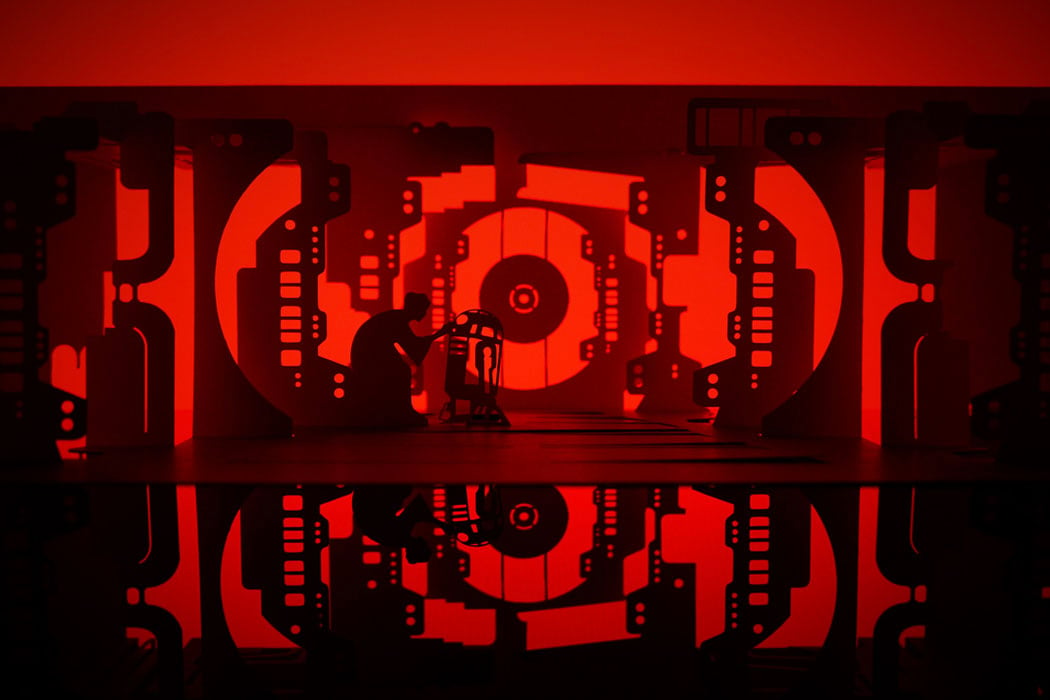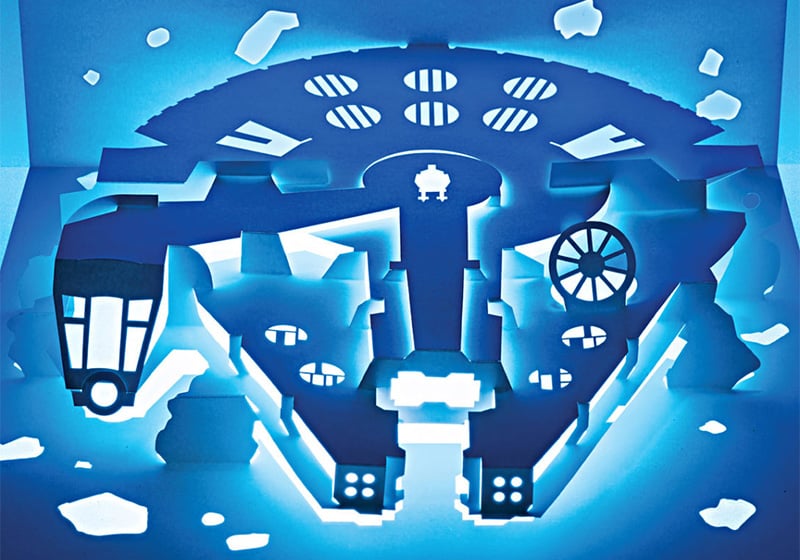Table of Contents
The kirigamis of Paper Dandy
For many children, scary movies can cause psychological and emotional damage, and consequences such as sleeplessness, nightmares and anxiety, since at this stage of development they are not yet able to distinguish between the fiction they see on the screen and reality. But for others, this genre can be a real source of inspiration.
Such is the case of Marc Hagan-Guirey, aka Paper Dandy, a London-based design director who first made a name for himself a decade ago with the exhibition “Horrorgami”, a collection of 13 kirigami structures based on spooky locations from film and television. Kirigami – a term that comes from ‘kiru’, to cut, and ‘kami’, paper – is, like origami, an ancient Japanese art, but it differs in that the paper is cut before it is folded.
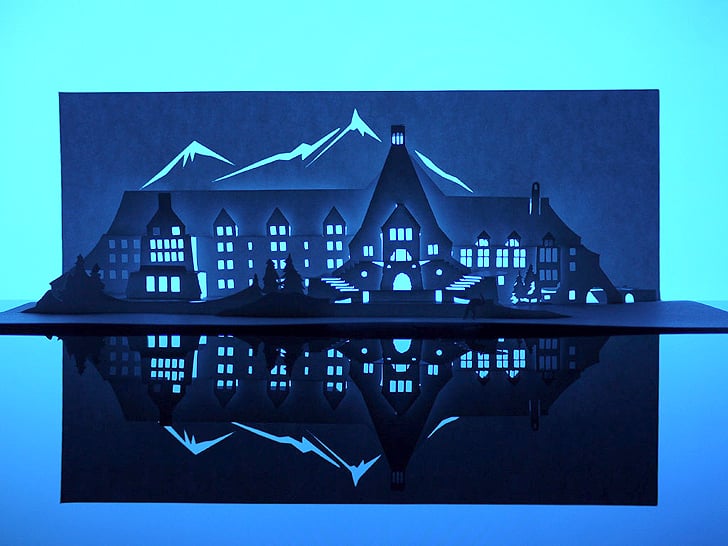
Interest in kirigami
Hagan-Guirey’s family did not have much money when he was growing up; this, together with the fact that he was an only child, meant that he had to harness the full power of his imagination. When his mother was able to buy him the occasional action figure, he built them forts out of toilet paper rolls, egg cartons and cereal boxes. But it wasn’t until he was almost 30 that he first combined his passion for horror movies with his crafting skills.
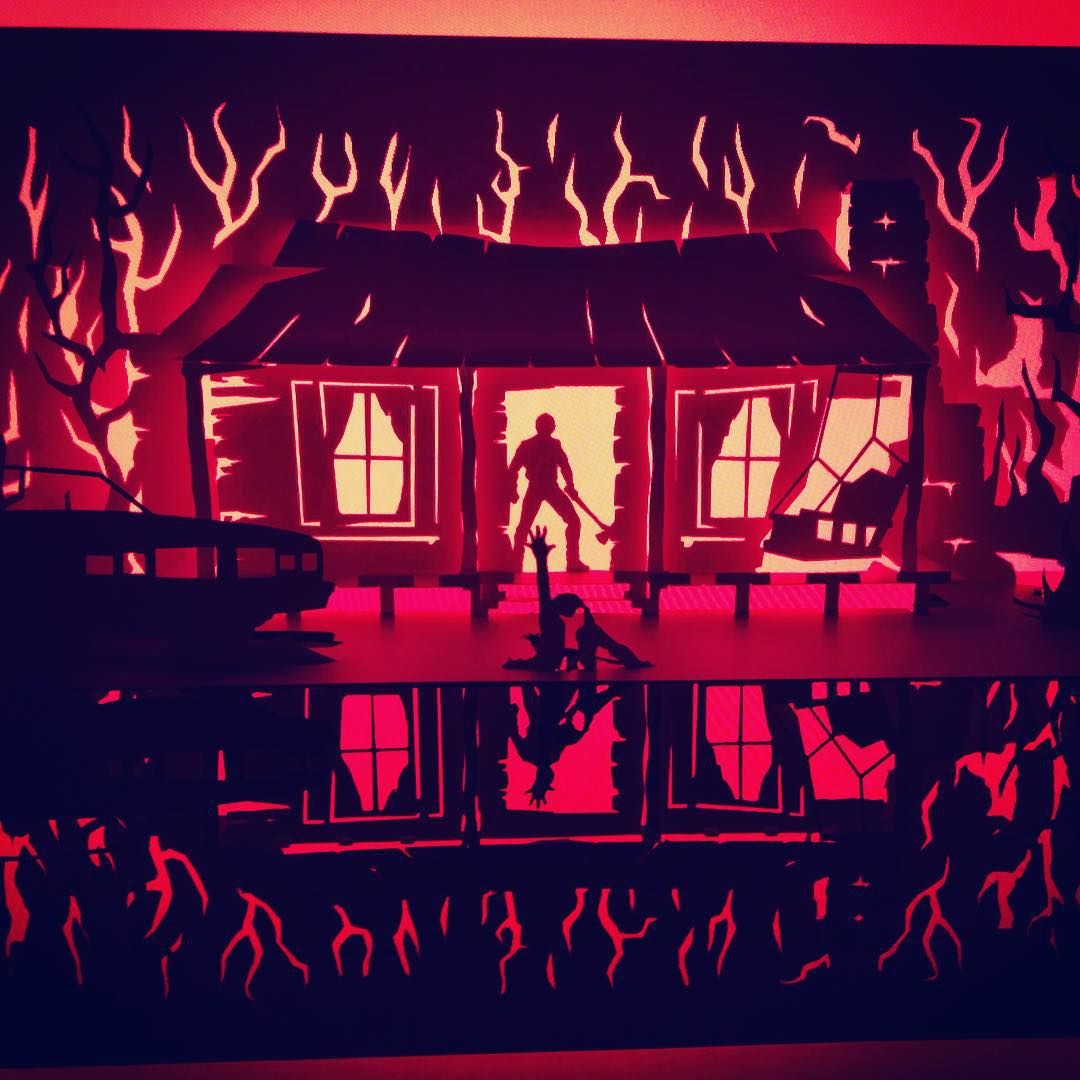
At the time, Hagan-Guirey was working as a digital art director, and had been thinking of taking a break from his stressful ad agency job for some time. While on holiday in Los Angeles, he had the opportunity to visit Ennis House, designed by renowned US architect Frank Lloyd Wright, where scenes from films such as “Blade Runner” and TV series such as “Twin Peaks” have been filmed.
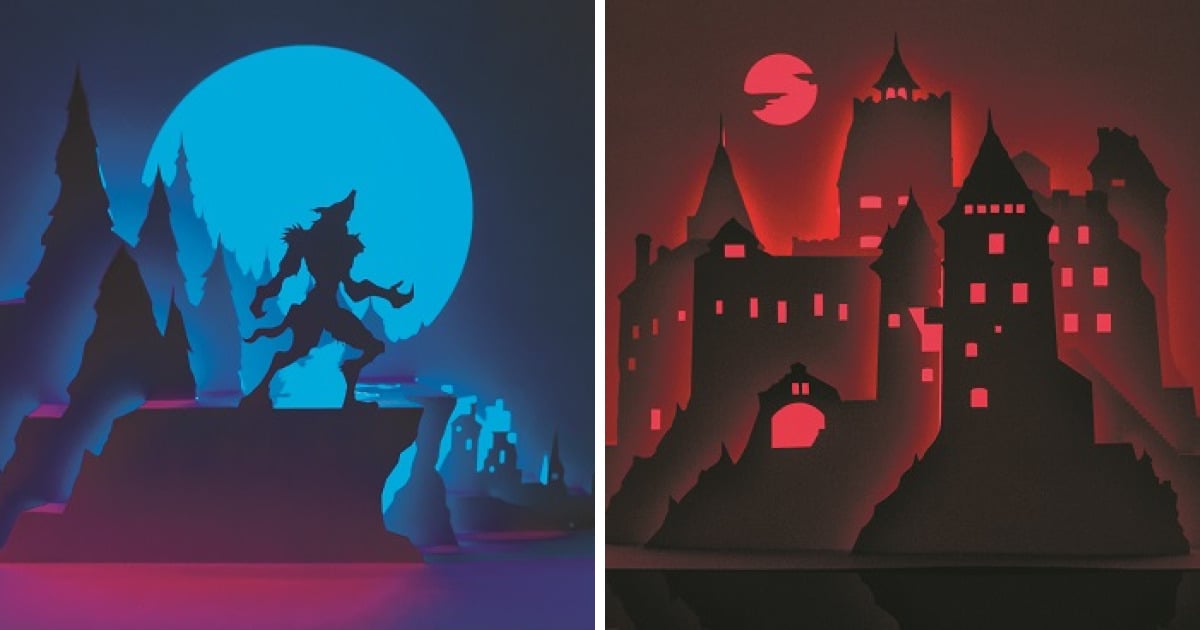
The artist said it left a major impression on him, and upon his return to London he began to explore how to commemorate this experience. A website? Graphic design? That’s how, while researching online, he discovered the art of kirigami. He promptly quit his job with the aim of, one day, creating a series for an exhibition.
“Horrorgami”, the abandoned houses of horror movies
For months, Hagan-Guirey studied the technique in detail, even acquiring floor plans of buildings to make his designs more accurate. Eventually, on Halloween 2012, he unveiled “Horrorgami” in a London gallery, for which he chose film sets and iconic buildings from some of the most famous horror movies of all time: the Bates Motel from “Psycho”, the fire station from “Ghostbusters”, the Dakota Building from “The Devil’s Seed”, the Overlook Hotel from “The Shining”, the house from “The Exorcist”, the mansion from “The Addams Family” and the Monroeville Mall from “Dawn of the Dead”, among others. The paper silhouettes were presented in a dark room inside light boxes, creating a terrifying experience for visitors.
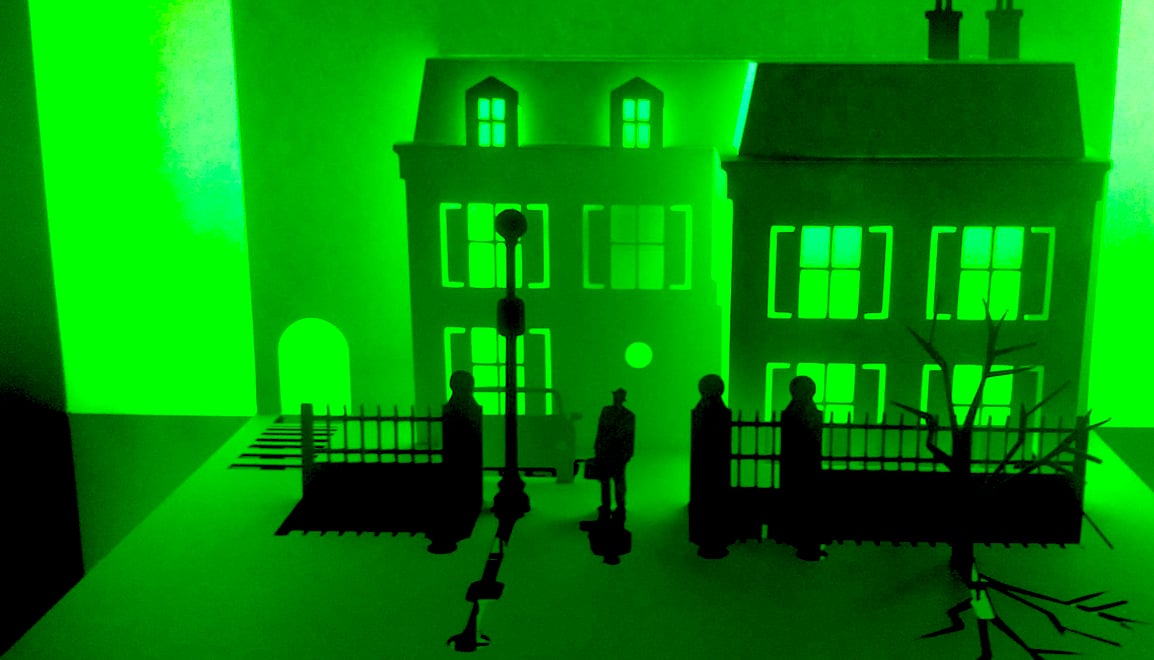
The success of “Horrorgami” has since allowed Hagan-Guirey – now known as Paper Dandy – to continue creating kirigami pieces for clients such as Samsung Galaxy and the London Transport Museum. But the project that has undoubtedly brought him the most international recognition is his series of pieces inspired by the ever-expanding “Star Wars” universe.
The “Star Wars” Universe
It all began with an online crowdfunding campaign that ended up exceeding all expectations, allowing the paper artist to focus on perfecting his kirigami technique to tell stories through incredible scenes featuring organic models. Most surprisingly, each creation is made using only a single sheet of paper, cut into shape with a scalpel. This means it requires incredible, almost surgical dexterity, along with a 3D architectural vision.
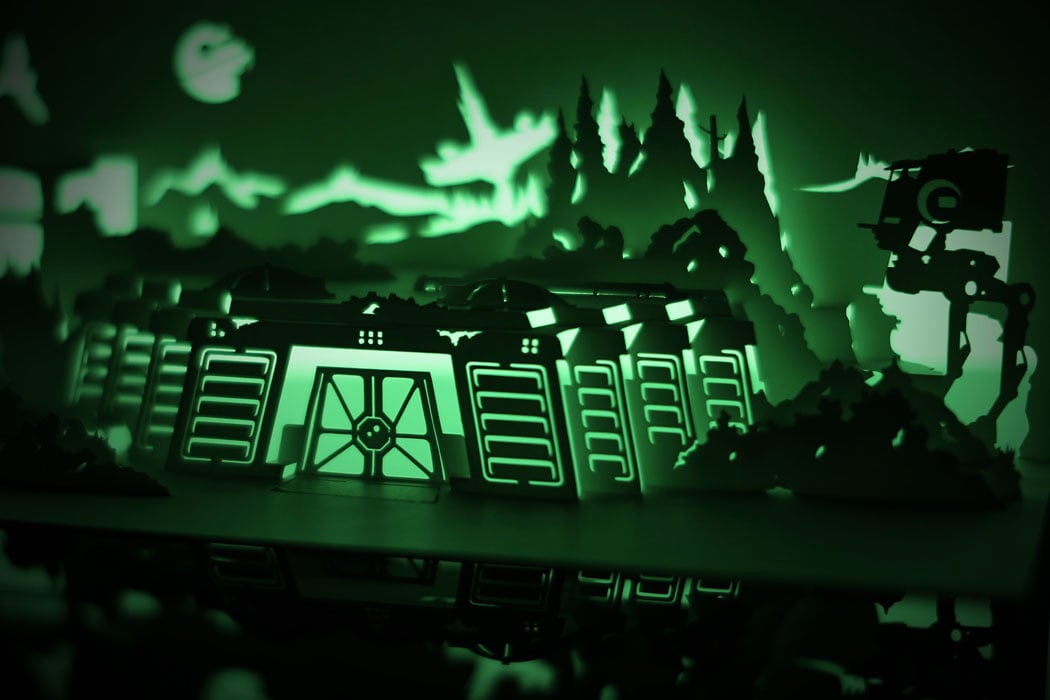
Shortly after this second exhibition, Hagan-Guirey signed a publishing contract with Lucas Film to produce an official book of the “Star Wars” movies. As with his previous book, “Paper Dandy’s Horrorgami”, “Star Wars Kirigami” features cardboard templates and step-by-step instructions for assembling the kirigami models, in this case, the 15 spaceships that appear throughout the saga.
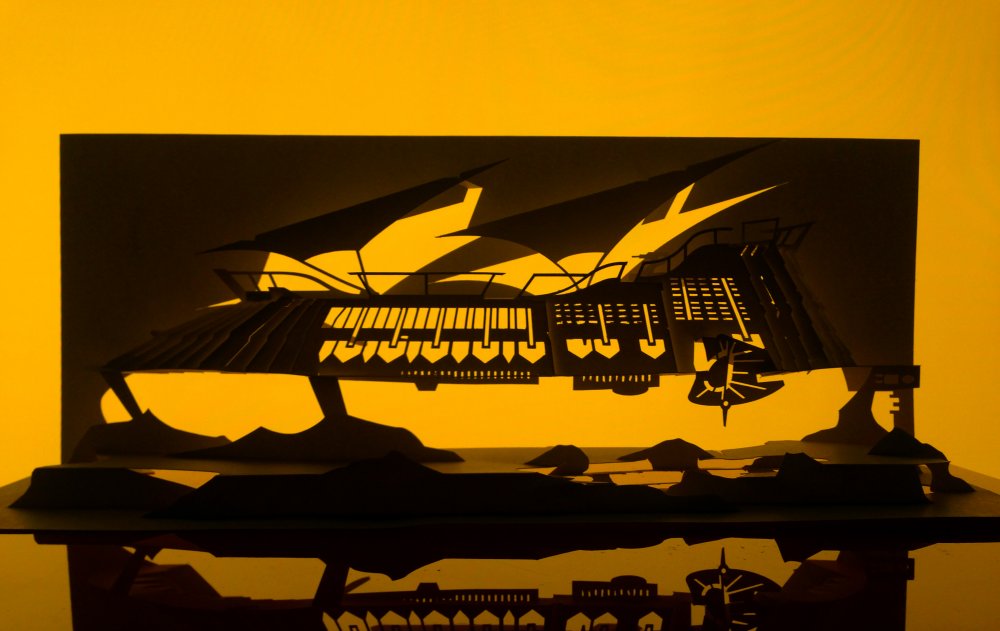
The Paper Dandy book collection also features two volumes dedicated to two of the greatest architects of all time, Frank Lloyd Wright and Le Corbusier. Both reproduce modernist buildings using perforated paper in a variety of seemingly random shapes. But with a little patience, you can construct them to become, like Hagan-Guirey, a true kirigami artist.
